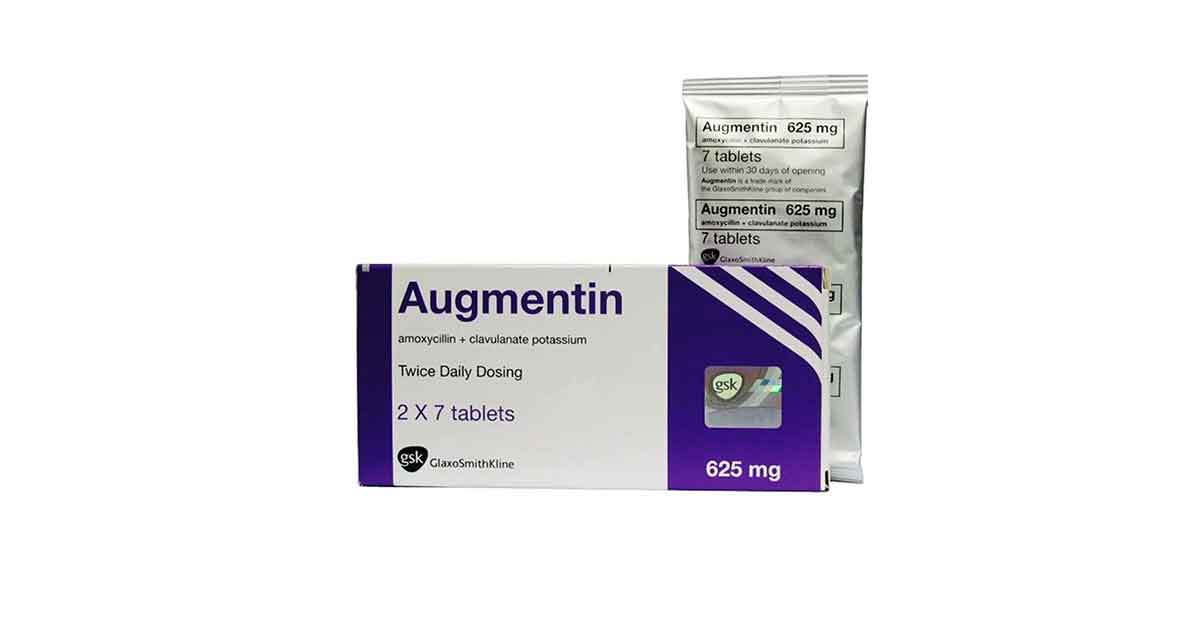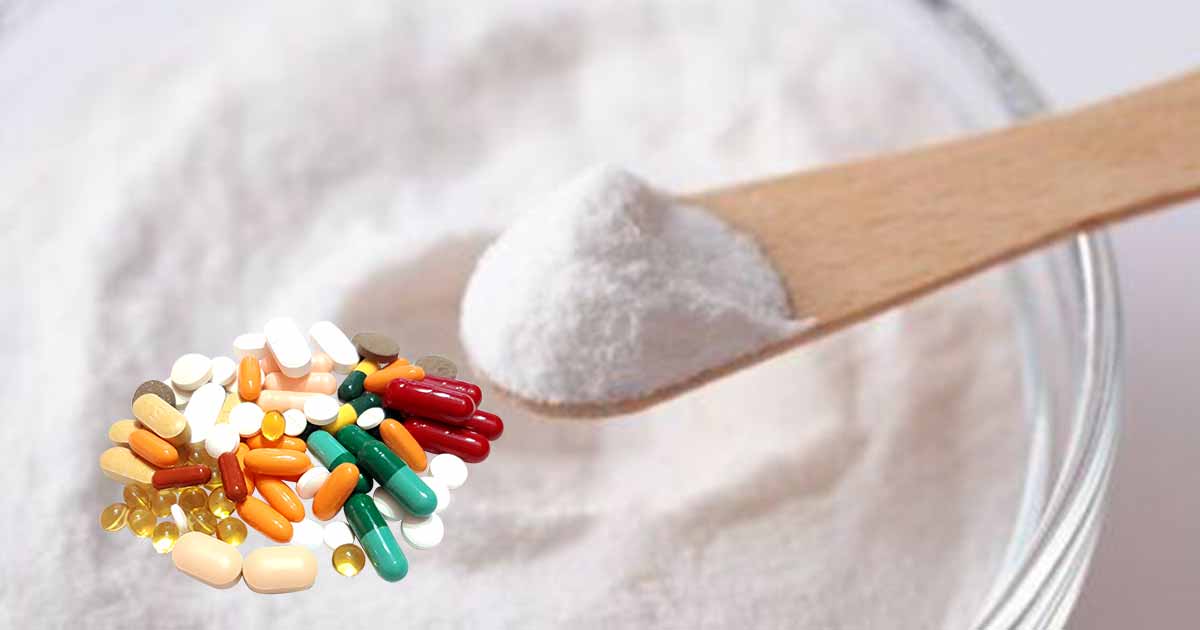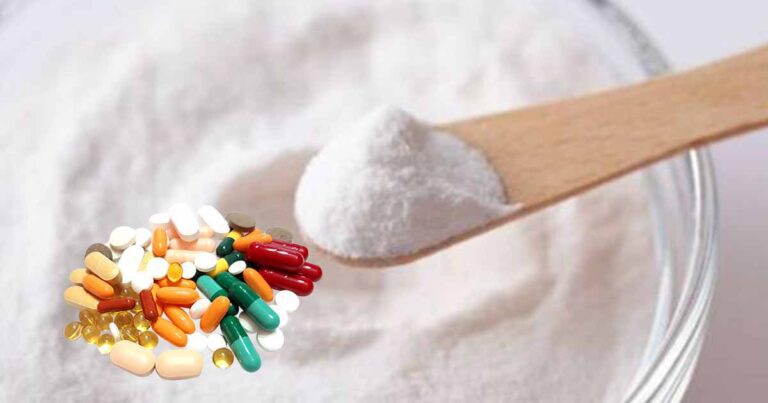Amoxicillin/clavulanic acid also called co-amoxiclav or amox-clav, is an antimicrobial combination drug of amoxicillin and clavulanic acid used in emergency and primary care unit. The amoxicillin is a penicillin drug that has activity against gram-positive and gram-negative bacteria. Clavulanic acid is a β-lactamase inhibitor.
Important brand names of amoxicillin/clavulanic acid are Augmentin, Clavulin, Amoclan.
Why Amoxicillin and Clavulanic Acid are Combined
Amoxicillin is a penicillin derivative with broad-spectrum activity against gram-positive and gram-negative organisms like Streptococcus species, Klebsiella pneumonia, Corynebacterium diphtheria, Escherichia coli, Salmonella spp, Listeria monocytogenes, Enterococcus species, Haemophilus influenzae, Enterococcus species, Borrelia species, Shigella spp, Moraxella catarrhalis.
However, most penicillins like amoxicillin are inactivated by the β-lactamase secreted by the bacteria. These Beta-lactamases are a diverse group of enzymes which the bacteria produce, and they break open the beta-lactam ring, inactivating the beta-lactam antibiotics.
Clavulanic acid is a β-lactamase inhibitor, which is not an effective antibiotic which acting alone but combined with penicillin antibiotics like amoxicillin and ticarcillin.
In amoxicillin/clavulanic acid, the clavulanic acid increases the spectrum activity to all the beta-lactamase-producing strains of the bacteria that amoxicillin has activity against. It also has activity against methicillin-sensitive Staphylococcus aureus (MSSA), Neisseria species, Proteus species, Capnocytophaga canimorsus, Pasteurella multocida, etc.
Medical Uses of Amoxicillin/Clavulanic acid:
Amoxicillin/clavulanic acid is used in the treatment of conditions such as urinary tract infection including pyelonephritis, acute bacterial rhinosinusitis, acute otitis media, aspiration pneumonia, community-acquired pneumonia, skin and soft tissue infection.
Other off-label uses include treatment of impetigo, diabetic foot infection, human or animal bite wound, odontogenic infections, group A streptococcal infections, acute exacerbation of chronic obstructive pulmonary disease, peritonsillar cellulitis/abscess.
Mechanism of Action
Amoxicillin is a broad-spectrum beta-lactam antimicrobial agent derived from penicillin. It exhibits the bactericidal activity by inhibiting the biosynthesis of the peptidoglycan layer of the bacterial cell wall.
Peptidoglycan layer is the outermost layer of the bacteria cell wall, and protects the structural identity of the cell. Amoxicillin bind to the penicillin-binding protein (PBPs) inhibiting cell wall formation and leading to bacteria lysis or destruction.
Clavulanic acid is a beta-lactamase that works with amoxicillin to broaden the spectrum. This is because bacteria has evolved and developed resistance to beta-lactam antimicrobials by producing enzymes called beta-lactamases.
The enzymes target and hydrolyse the beta-lactam ring needed for penicillin antibiotics to work. Clavulanic acid work by preventing this degradation through binding and deactivation of the beta-lactamases. This restores the antimicrobial activity of amoxicillin.
Formulations
Amoxicillin/clavulanic acid is available only as an oral medication. It is given at regular scheduled interval to achieve consistent serum concentrations over the minimum inhibitory concentration (MIC) required to eliminate the targeted organism. The oral formulation is available as immediate or extended-release tablets, reconstituted suspensions, or chewable tablets.
Take medication with food to improve absorption and reduce gastrointestinal effect.
The oral formulations of amoxicillin/clavulanic acid are available in different strengths like:
- Amoxicillin 250 mg and potassium clavulanate 125 mg
- Amoxicillin 500 mg and potassium clavulanate 125 mg
- Amoxicillin 875 mg and potassium clavulanate 125 mg
- Amoxicillin 200 mg and potassium clavulanate28.5 mg (chewable)
- Amoxicillin 400 mg and potassium clavulanate 57 mg (chewable)
- Amoxicillin 1000 mg and potassium clavulanate 62.5 mg (extended-release 12-hour formulation: different from other immediate release strengths)
Do not use the Amoxicillin 250 mg and potassium clavulanate 125 mg strength tablets in pediatric patients, as they have higher amount of clavulanic acid than other strengths.
Oral Suspension for reconstitution which are available in different strengths are for pediatric cases. They are flavored with banana cream, cherry, watermelon, apple to improve palatability. To preserve it, keep the reconstituted suspension in refrigerator and shake well before use. The different strengths are:
- Amoxicillin 125 mg / potassium clavulanate 31.25 mg per 5 ml. This is recommended in neonates and infants.
- Amoxicillin 200 mg / potassium clavulanate 28.5 mg per 5 mL
- Amoxicillin 250 mg / potassium clavulanate 62.5 mg per 5 mL
- Amoxicillin 400 mg / potassium clavulanate 57 mg per 5 mL
- Amoxicillin 600 mg /potassium clavulanate 42.9 mg per 5 mL (Extended release formulation)
Dosing
The dosing of amoxicillin/clavulanic acid is two to three times daily.
- Adult (Immediate release formulation): 500 mg every 8 to 12 hours or 875 mg every 12 hours, or Extended-release formulation: 2 g every 12 hours.
- Pediatric: Above 40 kg weight should receive 250 or 500 mg every 8 hours or 500 or 875 mg every 12 hours. 12 weeks and older should be given 20 to 40 mg amoxicillin/kg/day divided every 8 hours or 25 to 45 mg amoxicillin /kg/day divided every 12 hours.
- Neonates and infants: < 12 weeks should be given 30 mg amoxicillin/kg/day divided every 12 hours
Contraindications
Amoxicillin/clavulanic acid is contraindicated in patient with previous history of amoxicillin or clavulanic acid-induced hepatic dysfunction.
There is need for caution and dose adjustment in patient with hemodialysis or with severe renal impairment with creatinine clearance less than 30 mL/minute and also in renal impairment as antibiotics are mostly excreted renally.
Patients with penicillin allergy and hypersensitivity (amoxicillin, clavulanic acid, or other beta-lactam antimicrobial) should avoid the medication.
Special Consideration
Pregnancy: Pregnancy Category B
Nursing Mothers: Amoxicillin is excreted in breastmilk and can cause diarrhea, rash and restless in infants. Caution should be exercised when using it in breastfeeding mothers.
Drug interactions
- Combining amoxicillin clavulanic acid with probenecid can prolong and increase blood concentration of amoxicillin
- Co-administration with allopurinol can increase allergic or hypersensitivity reaction of amoxicillin.
- When combined with oral anti-coagulant, it can prolong prothrombin time.
- Oral estrogen/progesterone contraceptive effect can be reduced by co-administration.
Adverse Effect
Though well tolerated, amoxicillin clavulanic acid can cause gastrointestinal symptoms like diarrhea, nausea, vomiting, loose stool, and discomfort. There is also risk of increased risk of secondary Clostridioides difficile colitis, and women may develop vaginitis secondary to vaginal mycosis or candidiasis.
Hypersensitivity reaction are less common. The reaction can include pruritis, urticaria or life-threatening conditions like anaphylaxis, Steven-Johnson syndrome, or toxic epidermal necrolysis. High doses could cause seizure.
Toxicity
It causes drug-induced hepatic injury, which is more in men and people above 50 years, than women.
Other factors include people living with HIV on antiretroviral therapy, genetic polymorphism, or concomittant use of this medication that influence cytochrome P450 pathway.
References:
- https://www.ncbi.nlm.nih.gov/books/NBK538164/#:~:text=Amoxicillin%20is%20a%20penicillin%20derivative,to%20include%20other%20bacterial%20species.
- https://medlineplus.gov/druginfo/meds/a685024.html
- https://www.ncbi.nlm.nih.gov/books/NBK545273/
- https://www.healthlinkbc.ca/medications/amoxicillinclavulanic-acid-oral












